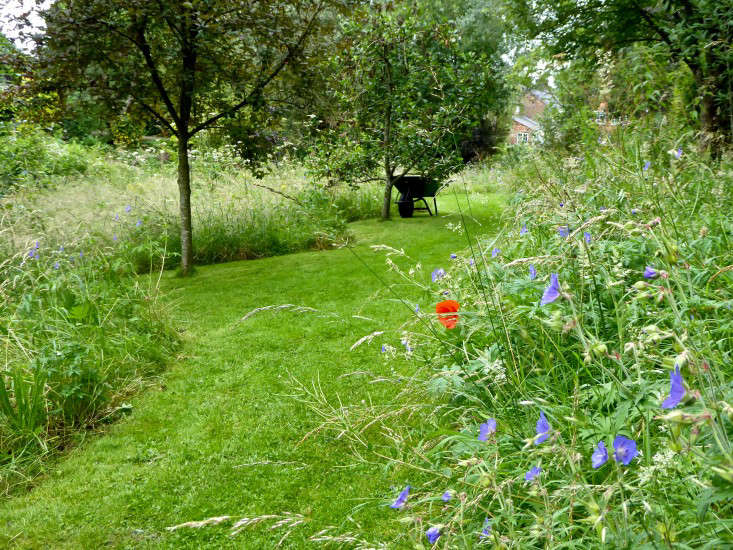Fleabane, Erigeron: “Dependable Daisy”
Why is fleabane such a favorite? As a garden designer, I admittedly have a go-to list of plants curated over time and I reflexively consult it for any new project. Yes, this is to save time, yes to avoid reinventing the wheel, and mostly because I know can rely on these plants. Example: When I need a low-maintenance flowering perennial that resists marauding deer, flowers enthusiastically for many months, can be used as a ground cover, softens edges, and has a casual feel, I always reach for Erigeron daisies. Done and done.
Please keep reading to learn more about fleabane, a tried-and-true trooper that will bloom enthusiastically from spring through autumn.

Erigeron, a proud member of the aster family, is a diverse genus of plants with more than 170 species found in temperate climates around the world. A gardener’s favorite, depending on the variety these daisies may behave like annuals, perennials, or biennials. Distinguished by perky rays of narrow petals formed around a bright center disk, erigeron flowers smother a landscape in pastel blooms.

Erigeron comes from Greek meaning “early” and “old man,” which references the plant’s tendency for blooming in late spring and for producing fuzzy white seed heads while simultaneously producing new flowers. The common name, fleabane, is possibly derived from a long-ago superstition that the dried plants repelled fleas or that the plants were poisonous to fleas.

Fleabane is often seen thriving in pastures, in open spaces, or along roadsides because it produces seeds prolifically; the fluffy seed heads easily disperse by wind and water. Unfortunately many types of erigeron are invasive weeds that displace native plants (but luckily there are more restrained varieties to choose from—read on for a list of our favorites).

Popular and well-behaved cultivars of Erigeron:
- E. ‘Wayne Roderick’: A California native and an evergreen perennial, at maturity it is 12 inches tall and forms a 24-inch clump bearing a profusion of lavender-blue flowers. Clay tolerant, perfect for edging, and excellent at attracting native bees and butterflies. This daisy also shrugs off salt spray, wind, and low water.
- E. glaucus ‘Sea Breeze’: An evergreen perennial, it forms clumps 10 inches tall by two feet wide and has gray-green foliage and wide lavender pink daisies with chartreuse centers.
- E. x moerheimii ‘Pink Santa Barbara Daisy’: Low-growing, this evergreen perennial will reach a height of 18 inches and a diameter of 36 inches, with light pink flowers. Very similar to Erigeron karvinskianus, this variety does not spread as wide and has larger, light-pink flowers (and does not reseed).
- E. karvinskianus: Known in the US as a Santa Barbara daisy, this prolifically blooming and fast-spreading evergreen perennial has golden yellow center disks surrounded by a fringe of white to pinkish petals. It can thrive miraculously in wall crevices or paving, where it rapidly spreads and can reseed to become a carpet of flowers. It grows as high as 24 inches and as wide as five feet.

Cheat Sheet
- Erigeron is a top pollinator-attracting plant; butterflies and moths especially adore these daisies. In fact, many species of moths and butterflies feed exclusively on erigeron.
- Fleabane fits well into a cottage garden when situated under bare-bottomed roses or at the base of shrubs such as hydrangeas and lilacs.
- Because erigeron thrives in quick-draining soil, it’s also a great choice for rock gardens, slopes, and seaside gardens.

Keep It Alive
- Depending on the species, erigeron will flower from late spring through the beginning of autumn. Deadhead it after the first flush to promote reblooming. Cut back stems to the ground at the end of autumn.
- Fleabane is relatively drought resistant, but happier with a regular supply of water.
- Deer resistant and low maintenance.
- Erigeron is a sun worshipper but also accepts part sun.
Are you designing a cottage garden from scratch (or filling in a few bare spots in a flower bed)? See more growing tips in Fleabane: A Field Guide to Planting, Care & Design. Browse our other Garden Design 101 guides to find the best Perennials and Annuals for your garden, including Lady’s Mantle, Foxglove, Cosmos, and Hollyhocks. See more of our favorite cottage gardens:
- Everything You Need to Know About Cottage Gardens
- 10 Ideas to Steal from English Cottage Gardens
- Bleeding Hearts and Dutchman’s Breeches: A User’s Guide
- Landscape Architect Visit: A Cottage Garden on the Connecticut Coast









Have a Question or Comment About This Post?
Join the conversation